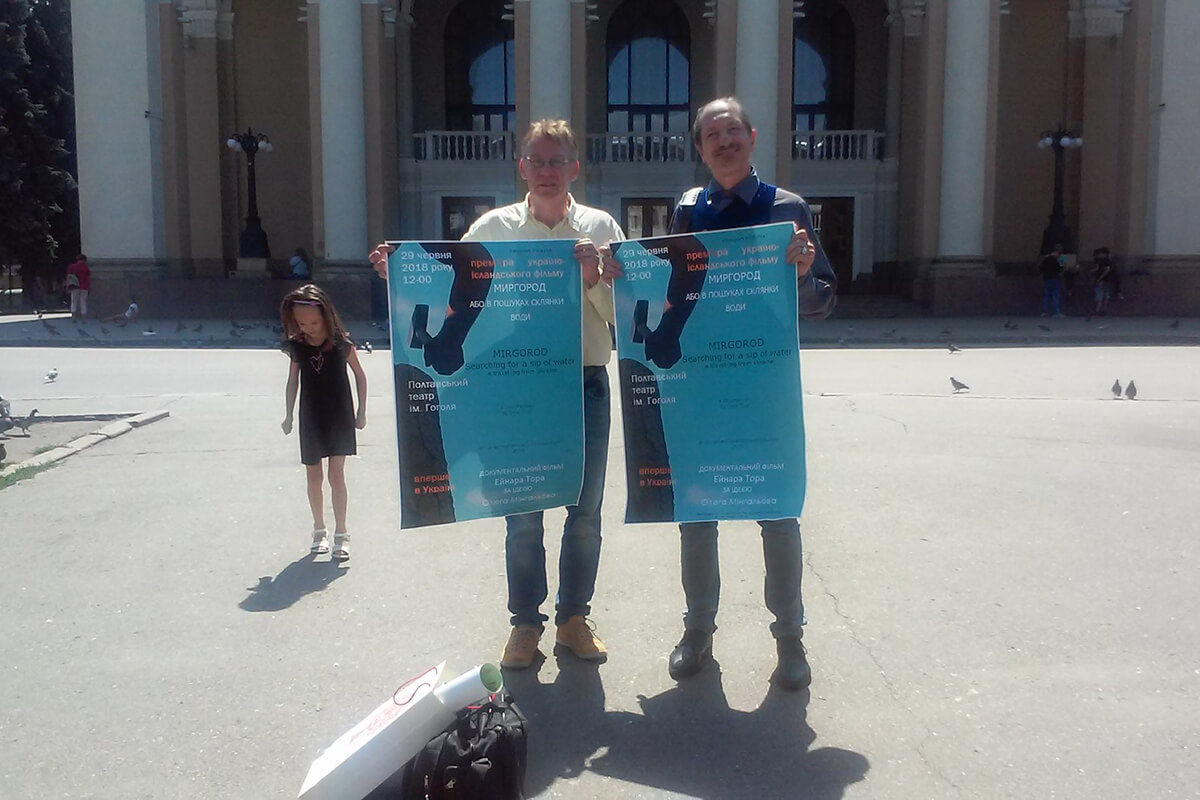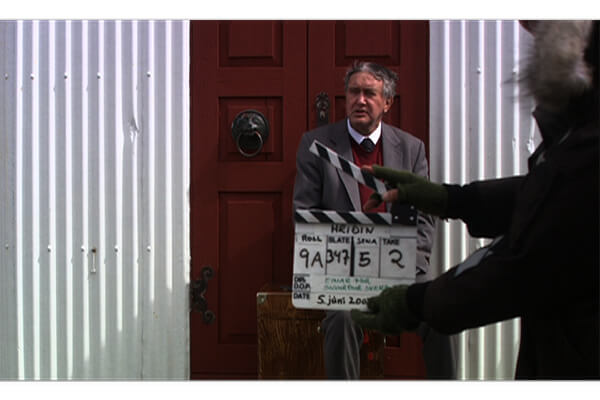Passport sinnir þjónustu við gerð kennslu- og kynningarmynda fyrir fyrirtæki á Íslandi ásamt ráðgjöf á sviði menntunar í kvikmyndagerð og skapandi skrifa fyrir myndmiðla.
Fyrirtækið leggur áherslu á að verkefni þess séu fersk, raunhæf í framleiðslu og eigi erindi við áhorfendur.
info (hjá) passportpictures.is
Passport offers services in producing documentaries for all media for corporate companies and institutions as well as consulting in the field of film education and creative writing for the visual media.
Passport emphasizes projects which are fresh, realistic in production and able to reach the general audience.
https://www.youtube.com/channel/UC28hairLqm2s934-







ABOUT FAIR USE
European Union law provides an explicit list of exceptions from copyrights granted to the rights holders, each with a specific scope. Nevertheless, the use of existing works for purposes of quotation, criticism, review, caricature, parody, and pastiche is explicitly allowed. This means that memes and similar parody creations can be used freely.
- What is Caricature, Parody, and Pastiche?
- Caricature portrays its subject in a simplified or exaggerated manner, that may insult or compliment it, for a range of purposes (e.g., political or entertainment).
- Parody is an expression of humor or mockery that imitates and evokes an existing work, while being noticeably different from it.
- Pastiche is a collage-like integration of a pre-existing work(s) into a new work; or a work in a style that imitates that of another work, artist, or period.
Read more here.- What is Quotation, Criticism, and Review?
- Quotation is the use of a copyrighted work or an extract from a work for the purposes of illustrating an assertion, defending an opinion, or allowing an intellectual comparison between that work and the assertions of that user. The user of a protected work must have the intention of entering into ‘dialogue’ with that work. Quoted work must have previously been lawfully made available to the public. The use must be in accordance with fair practice, and limited to the extent required by the specific purpose. The source and the author's name must be both indicated, unless impossible.
- Criticism is a quotation of an original work for the purpose of criticizing it.
- Review is a quotation of an original work for the purpose of examining or appraising it.
You can learn more from the European Commission’s Questions and Answers - New Copyright Rules. And to learn more about EU Member States’ national implementations of the various exceptions and limitations to copyright and related rights, see here.
Society benefits when creators have the freedom to critique and comment on the works of their peers or to remix and reuse artistic material in inventive ways. Fair use recognizes that while the primary purpose of copyright laws is to encourage artistic and cultural innovation, rigid application of copyrights would actually stifle that creativity. In EU, there is no ‘fair use’ doctrine comparable to that of the United States. If you’re interested in learning more about fair use and copyright laws, Stanford University offers a comprehensive overview that’s worth a look.
AI
Guidelines
Archival Producers Alliance (APA)
- Value of Primary Sources
The APA affirms the irreplaceable value of primary sources. Authentic audio-visual records are created by
humans, at a specific moment in time, contemporaneous with the events they portray. When used in
documentaries, they allow viewers to immerse themselves in a moment in time and invite the opportunity
to experience what someone from the era recorded of that moment, from their perspective, and with a
particular purpose.
As archival producers, we are always aware that the Archive may be biased and/or problematic in a
variety of ways. However, when using primary sources, the owner, context, and intent can be known,
wrestled with, and debated—all key parts of building an understanding of our shared history. By contrast,GenAI software often pulls from multiple unknown sources, creating realistic-seeming materials that can mislead audiences. GenAI materials are elements with perceived authority, yet no accountability of authorship.
When choosing to use GenAI in lieu of primary sources, we recommend considering the following:
A) GenAI and the Historical Record: Synthetic material that is indistinguishable from primary sources risks being passed along—on the internet, in educational materials, in other films—and is in danger of forever muddying the historical record.
B) Algorithmic Bias in Synthetic Media: We advise filmmakers to consider the role played by algorithmic
bias when using GenAI to create media—both in reinforcing stereotypes and in overcorrecting to combat
them. GenAI encodes every bias of its dataset. Additionally, most GenAI models draw from an in complete version of the historical record, as the majority of physical audio- visual archives still remain undigitized.C) GenAI Alterations to Primary Sources: We encourage filmmakers to consider maintaining the original
form and/or medium of primary source material (i.e. still photo vs. moving image, black & white vs.
color, aspect ratio, etc.), or to alert the audience if they do otherwise. The original format of a primary
source can often convey information about the time and place in which it was created. Using GenAI to
alter a primary source may mislead the audience. For example, converting a photograph to a moving
image could imply that a moving image camera was at an event when it was not. Or altering the aspect
ratio of a photograph using generative fill may introduce new people, buildings, landscapes, or even
empty space, to an image that could change its context and meaning.
D) Re-enactment and Re-creations: Filmmakers have long wrestled with how to maintain allegiance to the
truth while utilizing all the creative tools at their disposal—including re-enactment and re-creation. We
believe the questions posed by GenAI are on a continuum with these, but that GenAI creations present a
risk of greater magnitude because they often require little time and expense to produce. As such, we
encourage filmmakers to treat image generation with the same intentionality, and the same care for
accuracy and sensitivity, as they would a traditional re-creation, so that human discernment remains
central to the process.
- Transparency
We call on the industry to hold itself accountable by pursuing a transparent production process when
using GenAI, which we break into two categories.
A) Inward: By maintaining transparency inwardly (with the production teams, legal counsel, insurance
companies, distributors, streamers, and subjects) filmmakers will mitigate provenance questions, ethical
concerns, and legal risks.B) Outward: By maintaining transparency outwardly (with audiences) filmmakers will safeguard viewers’
trust—guiding them in their understanding of what is authentic and what is synthetic media within the
context of a given film.
Inward Transparency—Production Team
We encourage real-time communication within production teams so all are aware of what is and is not
GenAI material. Production team members should be aware of the proliferation of GenAI materials on the
internet and even in some archives (such as “deepfake” videos, doctored photos, etc.), and take care not to
inadvertently bring them into a project. When filmmakers do choose to use synthetic media during the
production process, we suggest adding a temporary watermark to those materials to avoid confusion about
what is GenAI and what is not.
To document the provenance of GenAI materials used, we recommend production teams produce cue
sheets for all GenAI elements—similar to the deliverables created for music and archival materials. For
each GenAI element, we suggest cue sheets record: Prompts used, software version (including Terms &
Conditions), and the date created (for all GenAI used that was created by the production team).
Any reference material used (i.e. audio recording, image, etc.), and the copyright status of that reference
(for all GenAI used that was created by the production team) Descriptions and timecodes for where
GenAI materials appear in the production (for all GenAI used, whether created by the production team or
pulled from a third-party source).
Outward Transparency—The Audience
We strongly advise filmmakers to alert and make clear to audiences their use of GenAI. There should be
clarity for the audience about what is and is not synthetic media. We recognize that different types of
transparency may be needed, depending on context and the audience’s understanding of what is happening
on screen. Suggested methods for doing so include: Lower thirds, bugs, or other types of watermarking on
the material itself. Visual vocabulary that alerts the audience to GenAI use, such as a unique frame around
the material, change of aspect ratio, colorization, etc. Having a character or narrator acknowledge the use
of AI in voice-over or on screen
Top of show and/or end of show language, keeping in mind that films are often excerpted—for
educational purposes, publicity, or otherwise—and viewers may not “tune in” to the beginning or end of a
given program. Therefore, we suggest this not be the only means of transparency. Acknowledging the use
of GenAI in promotional materials, such as trailers and press releases. We encourage filmmakers to be
extra diligent when GenAI is used to do the following—as the risk for sowing confusion is high: Make a
real person say or do something they did not say or do (i.e., human simulations, a technique sometimes
referred to as a “deepfake,” see section 4). lter or create footage, photos, or audio of a real event or place
Generate a realistic-seeming historical scene that did not actually occur Additionally, GenAI is a new type
of media that should be included in end credits in a manner similar to archival footage, music, etc.
These credits might include:
GenAI software or tools used, including which version of software
GenAI creator, such as artist or writer of prompts
GenAI companies employed
- Legal Considerations
In order to mitigate risk when using GenAI in a documentary, we encourage filmmakers to undertake a
thorough legal review, allowing adequate time and budget for this complex and important step. Lack of
transparency with legal counsel and E&O insurers could to lead to incomplete or inaccurate advice
resulting in additional legal risk for productions (see section 2). We strongly recommend working with
attorneys well-versed in, and up-to-date on, the rapidly changing legal landscape around GenAI, including
(but not limited to) the following areas of concern:
The multi-layered rights issues for production-created as well as third-party AI-generated materials (e.g.,
Terms & Conditions of rights-holder licenses, Terms & Conditions of AI software used, etc.).Requirements of union contracts (including, but not restricted to, those of DGA, WGA, IATSE, and SAG-
AFTRA) Misappropriation of a person’s voice, likeness, or name when using GenAI materials (i.e.Rightsof Publicity) and the attendant risk of misrepresentation Copyright protections, or lack thereof, for AI-
created materials that lack sufficient human authorship GenAI’s potential for misappropriating existingcopyrighted materials. The use of GenAI technology exposing the production to risk that is not covered by
E&O insurance policy. Suggested disclosure language for indication when GenAI materials are used (i.e.
lower thirds, top- or end-of-show, etc.) Relevance of international laws as they apply to GenAI use
- Ethical Considerations of Creating Human Simulations:
When using GenAI technology to alter or manipulate the face, body, or voice of a real person
(i.e.“deepfake”), we encourage filmmakers to take extra caution and to consider the following: Whether a
search has been reasonably pursued to find primary source materials which depict the individual at the
particular place and time the production aims to portray. Acquiring consent, when appropriate and
relevant, of individuals or constituencies whose likeness, images, and/or voices are being simulated; and
considering ways to take extra care when a subject or affected individual is unable to give informed
consent. Potential cultural sensitivities of using synthetic media to create a person’s face, body, or voice.
Whether the use of human simulations in the documentary could adversely affect the historical record
(See section 1). Whether the use of human simulation is transparent to the filmmaking team and the audience (see section 2).